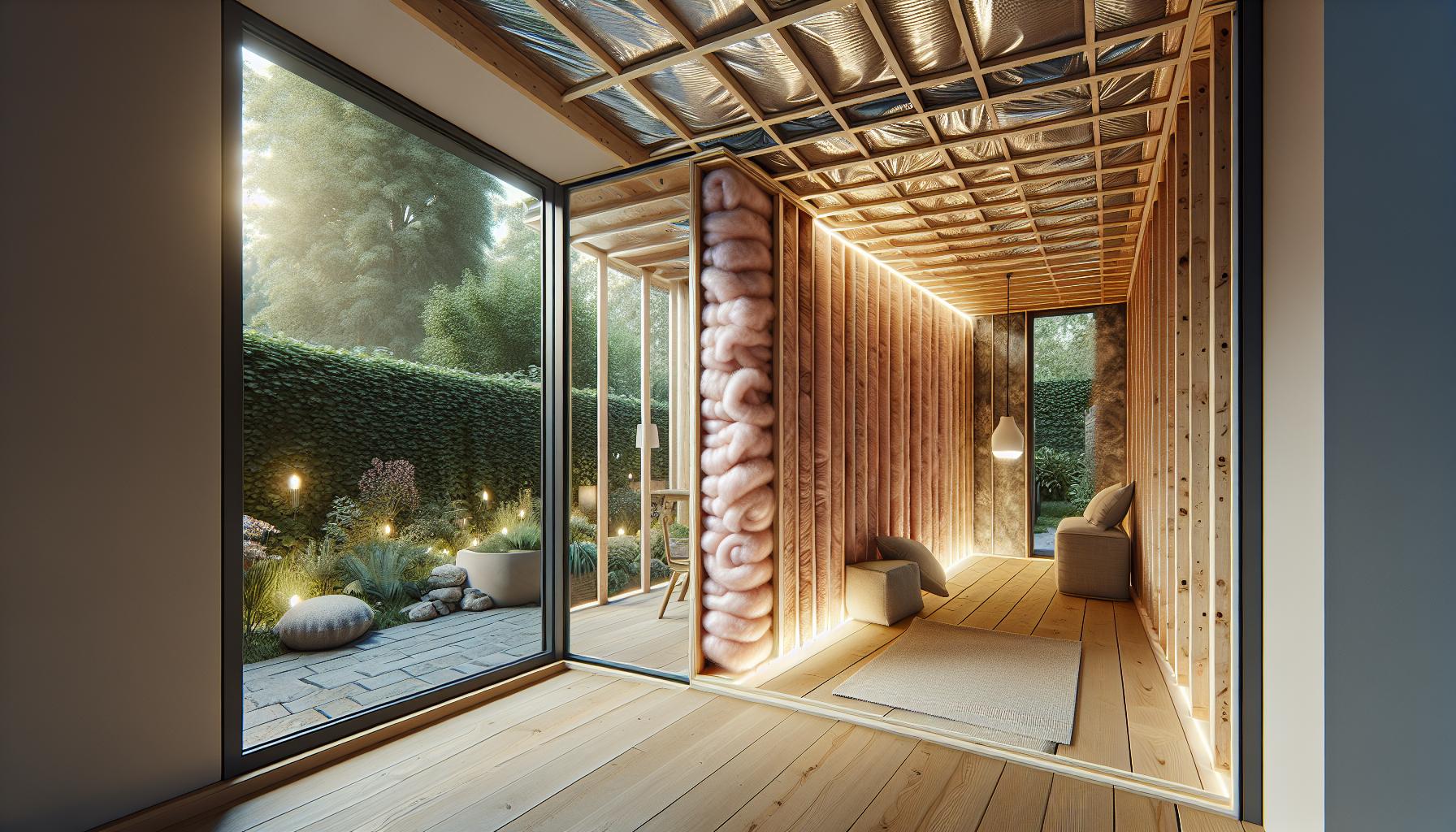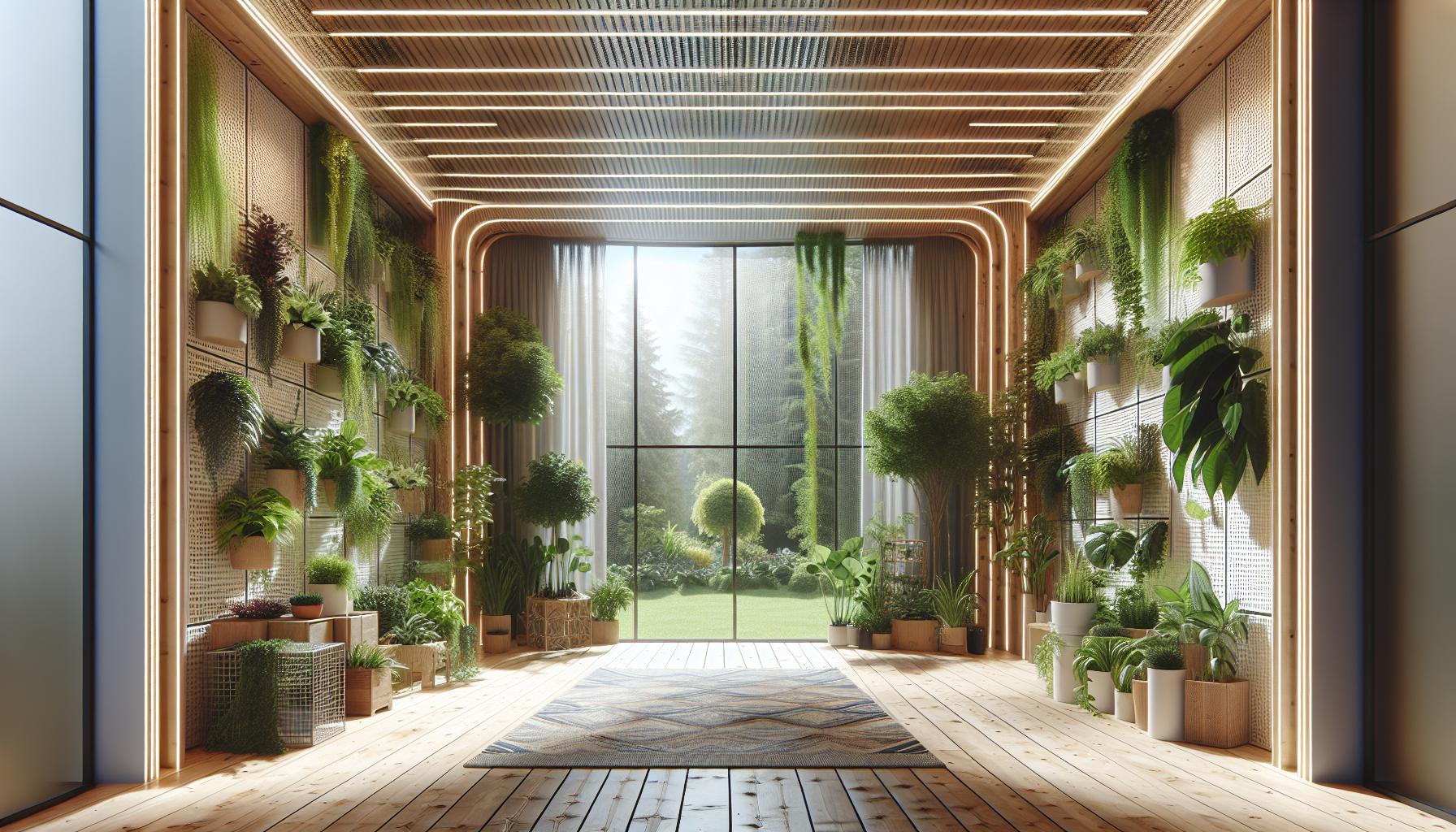Do I Need a Vapour Barrier for My Garden Room? A Complete Guide
Ever thought about adding a cosy garden room to your space? Maybe a studio, office, or even a gym tucked away in your backyard? It's an exciting prospect, isn't it? But as you jump into the planning and building process, there's one question you might not have considered yet: do you need a vapour barrier in your garden room? This might seem like a small detail, but it's one that can make a huge difference in the longevity and comfort of your new space.
Understanding the role of a vapour barrier is crucial, especially in spaces like garden rooms where the balance between indoor comfort and outdoor exposure is delicate. It's not just about keeping the damp out; it's about creating a space that's comfortable, energy-efficient, and protected against the unpredictable British weather. So, let's break it down together, shall we? Stick around, and we'll explore why a vapour barrier might just be the unsung hero of your garden room project.
What is a vapour barrier?
Wondering what exactly a vapour barrier is and why it seems like a must-have in every garden room chat you stumble upon? Let's break it down in the simplest terms. Imagine you're wrapping a sandwich in cling film to keep it fresh and prevent it from drying out. A vapour barrier does something similar for your garden room—it wraps it up, keeping the moisture outside from seeping in and potentially causing damage to the structure.
A vapour barrier is essentially a material used in building construction to prevent moisture from passing from one place to another. This is crucial because excess moisture can lead to mould growth, wood rot, and a whole host of other problems you definitely don't want for your cosy garden nook.
Common Mistakes and Misconceptions
Many folks think if their garden room looks solid and feels dry, they're in the clear. That's a common misconception. Moisture has a way of getting into the tiniest of spaces and making a big impact over time. Skipping the vapour barrier, thinking it's an unnecessary step or too much of a hassle, could leave your garden room vulnerable to the unpredictable British weather.
Another mistake? Assuming all vapour barriers are created equal. The truth is, the material you choose matters, and it can vary depending on your garden room's specific needs. Some might require a more robust barrier than others, especially if the room is being used as a gym, spa, or any function involving a lot of moisture.
Techniques and Methods
There are a couple of techniques to installing a vapour barrier, but the most common one involves laying it directly on the insulation before the interior walls go up. It's like putting on a raincoat underneath your clothes—odd but effective. The goal is to create a seamless layer that moisture can't penetrate.
For those of you in particularly damp areas or planning to use the room for more humid activities, consider a double-layer approach or a more heavy-duty vapour barrier material. It's a bit like dressing for the Scottish Highlands—you can never be too prepared for moisture.
Benefits of a vapour barrier in a garden room

When you're considering adding a garden room to serve as your office, gym, or studio, one critical component that might not immediately spring to mind is the vapour barrier. Yet, this unseen hero plays an essential role in maintaining the comfort and durability of your garden retreat. So, what are the benefits of including a vapour barrier in your garden room? Let's immerse.
First off, think of a vapour barrier like a raincoat for your building. Just as you'd wear one to keep dry during a downpour, a vapour barrier protects your garden room from moisture that can seep in. Moisture, whether it comes from the air outside or is generated inside by activities like exercise or using heaters, can be harmful if it penetrates the walls or ceiling.
Here are some key benefits:
Prevents Moisture Damage: By stopping moisture in its tracks, a vapour barrier protects the structure of your garden room from rot, mould, and mildew. This isn't just about keeping the building looking good; it’s about preserving its integrity over the long haul.
Improves Energy Efficiency: Moisture can undermine your insulation's effectiveness, making your garden room harder to heat or cool. With a vapour barrier, you maintain optimal insulation performance, which means your space stays comfortable without cranking up the heater or fan, saving you money on energy bills.
Increases Comfort: Beyond temperature control, a vapour barrier helps keep humidity levels in check. This means your garden room won't feel damp or clammy, making it a more pleasant space to spend time in no matter the season.
Avoiding Common Mistakes
One common mistake is using the wrong type of vapour barrier material or installing it incorrectly. Think of it this way: using a sieve instead of a raincoat won’t keep you dry. Similarly, choosing a material that’s not suited for your garden room’s specific needs or installing it haphazardly can lead to gaps or tears, rendering it ineffective. It's vital to select the right material for your climate and ensure it covers all areas without any breaks.
The role of a vapour barrier in maintaining indoor comfort

When you're nestled in your garden room, be it an office, gym, or studio, comfort is key. One unsung hero in maintaining this cosy atmosphere is the vapour barrier. Think of it as the garden room's shield against moisture, much like how you'd wear a raincoat on a drizzly day to stay dry. Without a vapour barrier, moisture can seep in, leading to all sorts of discomfort and issues.
Understanding Moisture Dynamics
Moisture in the air is like an uninvited guest. You might not notice it at first, but over time, its presence can wear out its welcome. Moist, damp air feels heavier and colder, making your garden room less inviting. On the flip side, in warmer months, this excess moisture can feel stifling. The vapour barrier acts to regulate this moisture, ensuring the air inside your garden space remains comfortable year-round.
Common Misconceptions and Mistakes
You might think, "It's just a sheet; how hard can it be?" Yet, here lies the first trap. Not all vapour barriers are created equal. The material and installation process matter more than most anticipate. For instance, placing a barrier on the wrong side of your insulation can trap moisture instead of blocking it — the exact opposite of what you want! Picture trapping a cloud inside your walls; it's just asking for trouble.
Tailoring to Your Needs
No two garden rooms are the same, and likewise, the approach to incorporating a vapour barrier will vary. If your garden room has significant exposure to sunlight, it might need a more UV-resistant barrier. Or, if your area is particularly high in humidity, choosing a material that can handle a higher moisture load is crucial.
When it comes to installation, precision is your friend. Gaps or holes in the barrier are like leaving a window open during a storm — they defeat the purpose. Sealing every edge and making sure the barrier is continuous is vital. It's akin to ensuring every button on your raincoat is done up before stepping out into the rain.
Choose the Right Material: Not just any plastic sheet will do. Look for materials specifically designed for vapour barriers, with the appropriate permeability for your climate.
Seal the Deal: Use sealing tape designed for vapour barriers to ensure
Protection against the British weather
When you're investing in a garden room, whether it's for an office, gym, or studio, one of your top priorities should be to ensure it stands up to the notoriously unpredictable British weather. The key to this? A well-installed vapour barrier.
Think of a vapour barrier as your garden room's raincoat. Just like you wouldn't step out in a storm without some protection, your garden room needs that same layer of defense to keep it dry and cozy. The British weather, with its sudden downpours, high humidity in summer, and damp conditions in winter, can be a real challenge for garden buildings. Moisture, if allowed to penetrate the structure, can lead to all sorts of problems from mould and mildew to rot and structural damage.
One common misconception is that any plastic sheeting can act as a vapour barrier. This isn't the case. The material for your vapour barrier needs to be specifically designed to manage vapour transfer effectively. Choosing the wrong material can be as ineffective as bringing an umbrella with holes to a rainstorm. You need something robust that's specifically engineered for the job.
Installing a vapour barrier isn't just a case of stapling it to the walls, either. It's easy to make mistakes here, like leaving gaps or not overlapping the sheets properly. These errors can lead to moisture sneaking in. Imagine laying tiles but leaving wide spaces between them; the water's going to find a way through. Make sure the barrier is continuous and well-sealed at all joins and edges.
Different garden rooms might require different approaches. For instance, a garden gym, with all its heat and moisture from equipment, might need a more heavy-duty solution compared to a less humid garden office. It’s crucial to choose a vapour barrier that matches your specific needs.
In terms of techniques, one method isn't necessarily superior to another, but proper installation is key. Whether you’re applying it directly to the interior wall before plasterboarding or using a special insulated liner, ensuring a tight, gap-free fit is what makes all the difference.
Choosing the right vapour barrier for your garden room
Selecting the perfect vapour barrier for your garden room isn't much different from picking out the ideal raincoat before a stormy day. You want something durable, effective, and fitting for the conditions you’ll face. In the world of garden rooms, this means choosing a vapour barrier that matches your garden room’s specific needs and the local climate.
Understand the Material Options
Vapour barriers come in various materials, each with its pros and cons. Polyethylene sheets are a common choice, known for their affordability and effectiveness. But, not all plastics are created equal. Opt for a material that’s specifically designed for vapour barrier purposes – it’s about material integrity, not just any plastic layer.
Gauge the Thickness
Thicker isn’t always better, but in the case of vapour barriers, thickness correlates with durability and moisture resistance. A thicker barrier might be more suited for areas with high humidity or more extreme weather conditions. But, don't go overboard; too thick and it can become difficult to install.
Avoiding Common Pitfalls
One size doesn’t fit all. A common mistake is treating all garden rooms and locations the same. An area prone to damp conditions requires a different approach compared to a dry, arid location. Installation errors, such as not sealing the edges properly or leaving gaps, can render the most high-quality vapour barrier ineffective. Picture leaving your raincoat open at the front; it doesn’t matter how waterproof it is if you’ve not used it correctly.
Consider Professional Advice
While DIY installations can be tempting, consulting a professional who understands your local climate and garden room specifications can save you a lot of hassle in the long run. They can recommend the best material, thickness, and installation techniques suited to your specific situation.
Remember, the choice of vapour barrier can greatly affect the longevity and enjoyment of your garden room. With the right selection and installation, you can enjoy your garden office, gym, or studio, confident in the knowledge that it’s well-protected against moisture and the elements.
Key Takeaways
Importance of a Vapour Barrier: Ensures the longevity, comfort, and energy efficiency of your garden room by preventing moisture damage and maintaining optimal insulation performance.
Common Mistakes to Avoid: Skipping the vapour barrier installation and using incorrect materials can leave your garden room vulnerable to moisture, leading to structural damages and inefficiency.
Choosing the Right Material: Not all vapour barriers are equal; selecting one that is specifically designed for vapour control and appropriate for your climate is crucial.
Proper Installation is Key: Effective moisture control requires a correctly installed vapour barrier, with careful attention to sealing all joins and edges to prevent gaps.
Tailoring to Your Needs: Different garden room uses and locations may require different types of vapour barriers, highlighting the importance of customising your choice to match specific requirements.
Professional Advice Recommended: For the best results, consult a professional to choose and install a vapour barrier that is suited to the specific needs of your garden room and local climate conditions.
Conclusion
Deciding on whether you need a vapour barrier for your garden room isn't just a matter of preference; it's a critical decision that impacts the room's longevity, energy efficiency, and your overall comfort. The right vapour barrier, meticulously chosen based on your specific needs and local climate, can prevent moisture damage and enhance the space's usability year-round. Remember, not all garden rooms are created equal, and neither are all vapour barriers. Avoiding installation mistakes and opting for professional advice can ensure you select the best material and thickness for your garden room. Eventually, investing time in choosing the right vapour barrier pays off by significantly affecting your garden room's enjoyment and durability.
Frequently Asked Questions
What are the benefits of having a vapour barrier in a garden room?
A vapour barrier in a garden room helps prevent moisture damage to the building structure, improves energy efficiency by reducing heating and cooling costs, and increases the overall comfort level within the space.
How do I choose the right material for a vapour barrier?
The choice of material for a vapour barrier depends on your specific needs and the local climate. Options include polyethylene sheets, foil-backed paper, and specially coated sheathing products. Material integrity and suitability for your garden room's specific conditions are crucial.
What are the common mistakes to avoid when installing a vapour barrier?
Common mistakes include not considering the specific needs of your garden room, such as its environmental exposure and usage, choosing the wrong material or thickness, and poor installation techniques that can compromise the barrier's effectiveness.
Why is the thickness of the vapour barrier important?
The thickness of the vapour barrier affects its durability and ability to prevent moisture from passing through. It's essential to select the appropriate thickness based on the garden room’s location and the expected internal conditions to ensure maximum protection.
Should I seek professional advice for installing a vapour barrier in my garden room?
Yes, considering professional advice is recommended. Professionals can help you choose the best material, thickness, and installation techniques based on your garden room's specific situation, ensuring the vapour barrier effectively meets its intended purpose.



